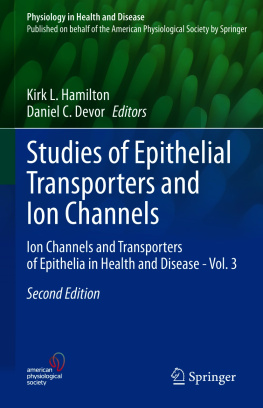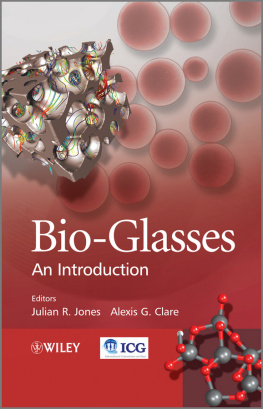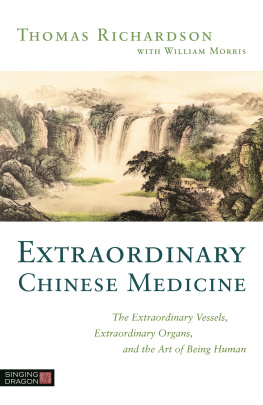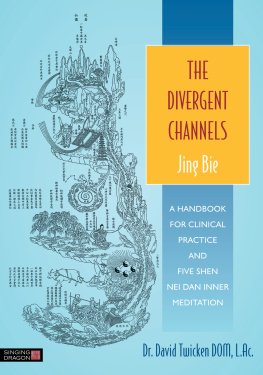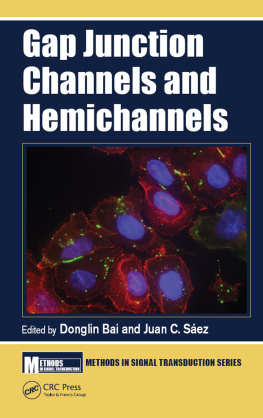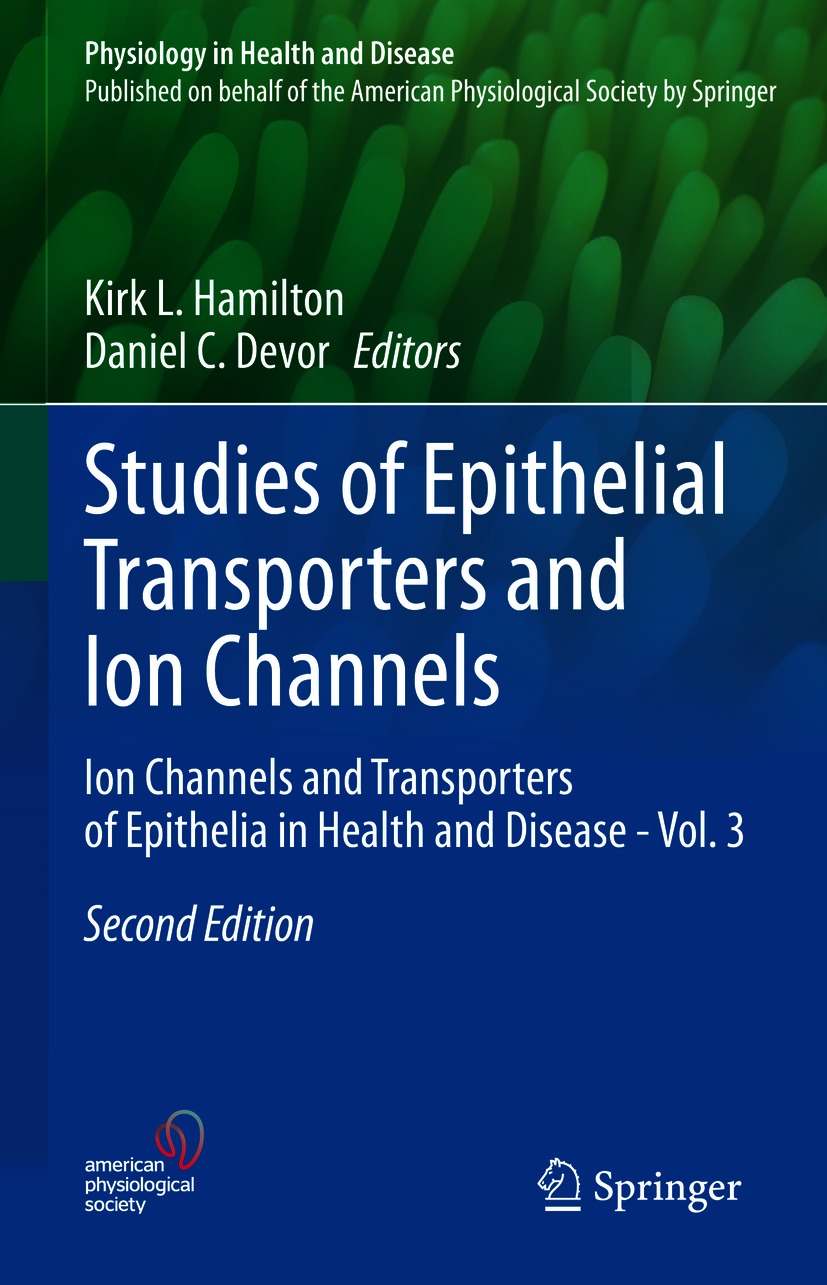Physiology in Health and Disease
Physiology in Health and DiseaseThis book series is published on behalf of the American Physiological Society (APS) by Springer. Access to APS books published with Springer is free to APS members.
APS publishes three book series in partnership with Springer:Physiology in Health and Disease (formerlyClinical Physiology ),Methods in Physiology , andPerspectives in Physiology (formerlyPeople and Ideas ), as well as general titles.
APS publishes three book series in partnership with Springer: Physiology in Health and Disease (formerly Clinical Physiology), Methods in Physiology, and Perspectives in Physiology (formerly People and Ideas), as well as general titles.
More information about this series at http://www.springer.com/series/11780
Editors
Kirk L. Hamilton and Daniel C. Devor
Studies of Epithelial Transporters and Ion Channels
Ion Channels and Transporters of Epithelia in Health and Disease - Vol. 3
2nd ed. 2020

Logo of the publisher
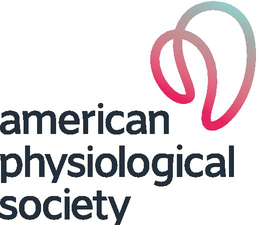
Logo of the publisher
Editors
Kirk L. Hamilton
Department of Physiology, School of Biomedical Sciences, University of Otago, Dunedin, Otago, New Zealand
Daniel C. Devor
Department of Cell Biology, University of Pittsburgh, Pittsburgh, PA, USA
ISSN 2625-252X e-ISSN 2625-2538
Physiology in Health and Disease
ISBN 978-3-030-55453-8 e-ISBN 978-3-030-55454-5
https://doi.org/10.1007/978-3-030-55454-5
Published on behalf of The American Physiological Society by Springer
The American Physiological Society 2016, 2020
This work is subject to copyright. All rights are reserved by the Publishers, whether the whole or part of the material is concerned, specifically the rights of translation, reprinting, reuse of illustrations, recitation, broadcasting, reproduction on microfilms or in any other physical way, and transmission or information storage and retrieval, electronic adaptation, computer software, or by similar or dissimilar methodology now known or hereafter developed.
The use of general descriptive names, registered names, trademarks, service marks, etc. in this publication does not imply, even in the absence of a specific statement, that such names are exempt from the relevant protective laws and regulations and therefore free for general use.
The publishers, the authors, and the editors are safe to assume that the advice and information in this book are believed to be true and accurate at the date of publication. Neither the publishers nor the authors or the editors give a warranty, express or implied, with respect to the material contained herein or for any errors or omissions that may have been made. The publishers remain neutral with regard to jurisdictional claims in published maps and institutional affiliations.
This Springer imprint is published by the registered company Springer Nature Switzerland AG.
The registered company address is: Gewerbestrasse 11, 6330 Cham, Switzerland
We dedicate this second edition to our families Judy, Nathan, and Emma for KLH, and Cathy, Caitlin, Emily, and Daniel for DCD.
Preface to Second EditionVolume 3
Our ultimate goal for the first edition of Ion Channels and Transporters of Epithelia in Health and Disease was to provide a comprehensive and authoritative volume that encapsulated the most recent research findings in the basic molecular physiology of epithelial ion channels and transporters of molecular diseases from the laboratory bench top to the bedside. Additionally, we envisioned that the book would be very exciting and useful to a range of readers from undergraduate and postgraduate students, to postdoctoral fellows, and to research and clinical scientists providing a wealth of up-to-date research information in the field of epithelial ion channels and transporters in health and disease. We firmly believe that the first edition fulfilled a niche that was crucially required. We have been informed that the first edition of the book has proven to be the best performing APS/Springer book based on downloaded chapters, to date. This is a direct testament to the world-class scientists and clinicians who contributed excellent chapters to that edition. Of course, there were many epithelial ion channels and transporters which were not included in the first edition, but certainly warranted inclusion.
With our second edition, we have superseded our original expectations by increasing the number of chapters from 29 in the first edition to a 3-volume second edition including 54 chapters; resulting in 25 new chapters. All of the original chapters have been expanded. Again, we were very fortunate to recruit key outstanding scientists and clinicians who contributed excellent chapters, some who were unable to commit to the first edition. In the end, the second edition has a total of 128 authors from 13 countries across four continents and both hemispheres. We truly believe that this book series represents a worldwide collaboration of outstanding international scientists and clinicians.
Volume 3: Studies of Epithelial Transporters and Ion Channels
This is the third of three volumes highlighting the importance of epithelial ion channels and transporters in the basic physiology and pathophysiology of human diseases. This volume has been expanded for the second edition. Volume 3 consists of 30 chapters, including 11 new chapters, and 2 original chapters with new authors, written by experts of ion transporter and ion channel families. Additionally, this volume contains chapters from experts in the pharmacology/pharmaceutical world who have contributed chapters on the most recent preclinical drug discovery efforts, culminating in what they have learned from clinical trials. Chapter topics include the Na+/K+-ATPase, Na+/K+/2Cl- cotransporter, Na+-Cl cotransporter, NBCe 1 bicarbonate cotransporter, Na+-glucose cotransporters (including GLUT transporters), Na+/H+ exchangers, amino acid transporters, Na+-Ca2+ exchanger, urea transporters, H+:K+-ATPase, zinc transporters, SLC26 transporters, CLC-2 chloride channel, Cl/H+ antiporter CLC-5, CFTR, TMEM16 proteins (anoctamins), ENaC, ROMK, and Kir4.1. In addition, there are chapters on KCa3.1 and BK channels, including on their pharmacology. There is a chapter on the KCNE regulation of KCNQ channels, as well as chapters on Orai channels, TRP channels, P2X receptors, polycystins (PC1 and PC2), and aquaporins. This volume provides vast background information about these transport proteins, structure and function of specific ion transporters and ion channels, and normal physiology and pathophysiology of these transport proteins in disease.
It is our intent that the second edition continues to be the comprehensive and authoritative work that captures the recent research on basic molecular physiology of epithelial ion channels and transporters of molecular diseases. We hope this new edition will be the go-to compendium that provides significant detailed research results about specific epithelial ion channels and transporters, and how these proteins play roles in molecular disease in epithelial tissues.

